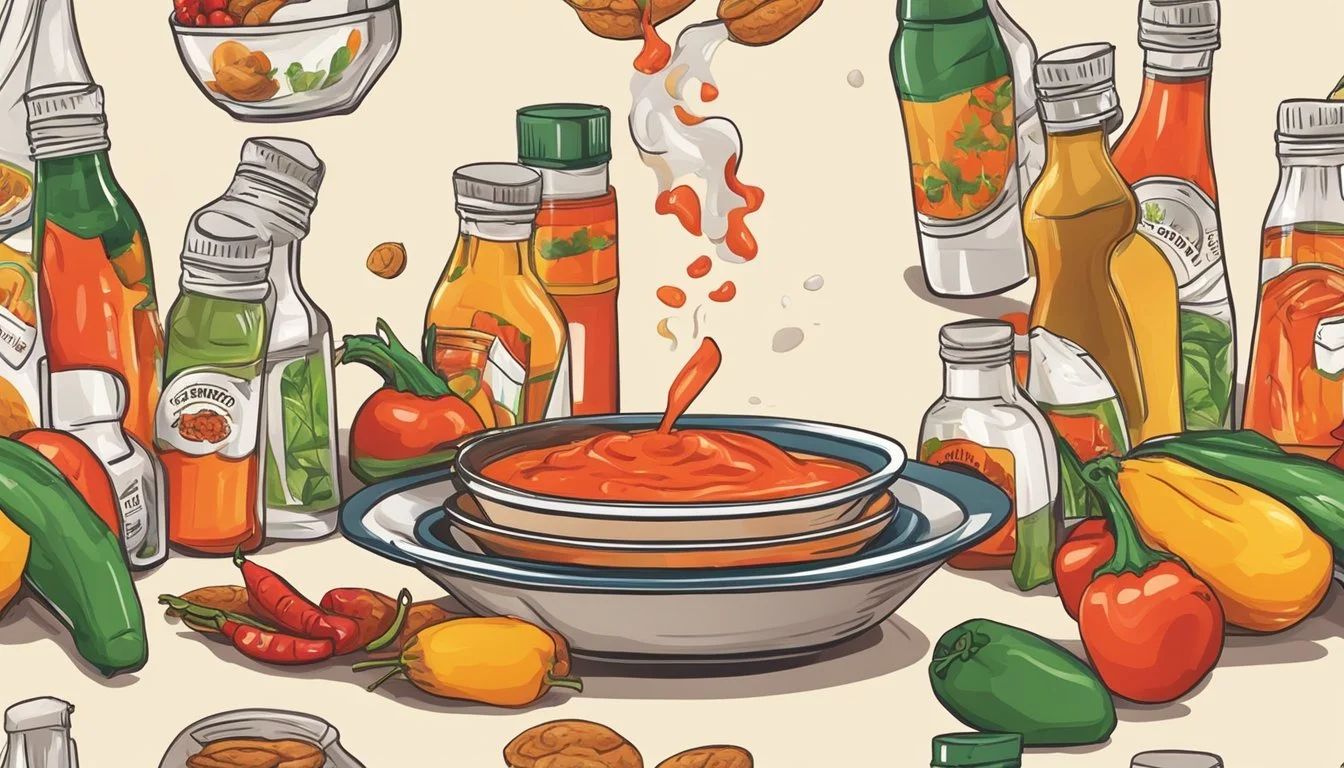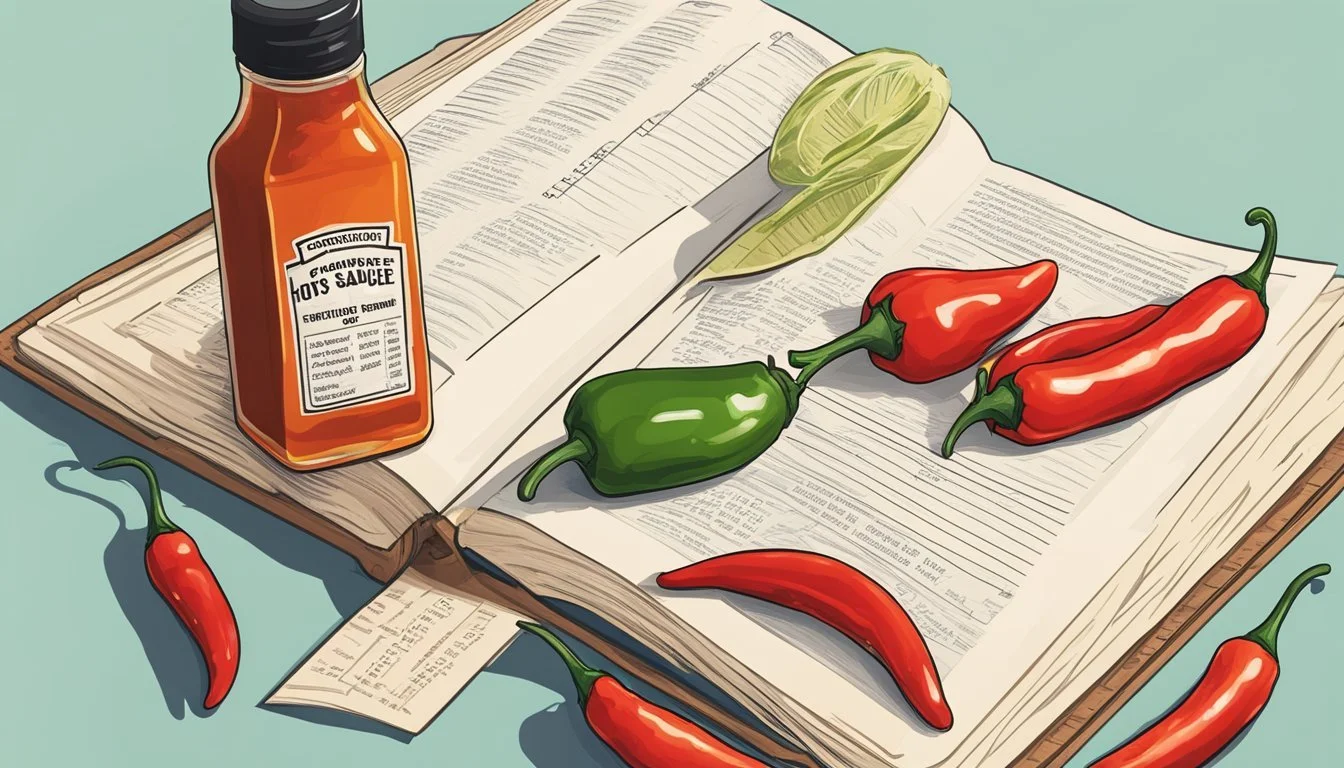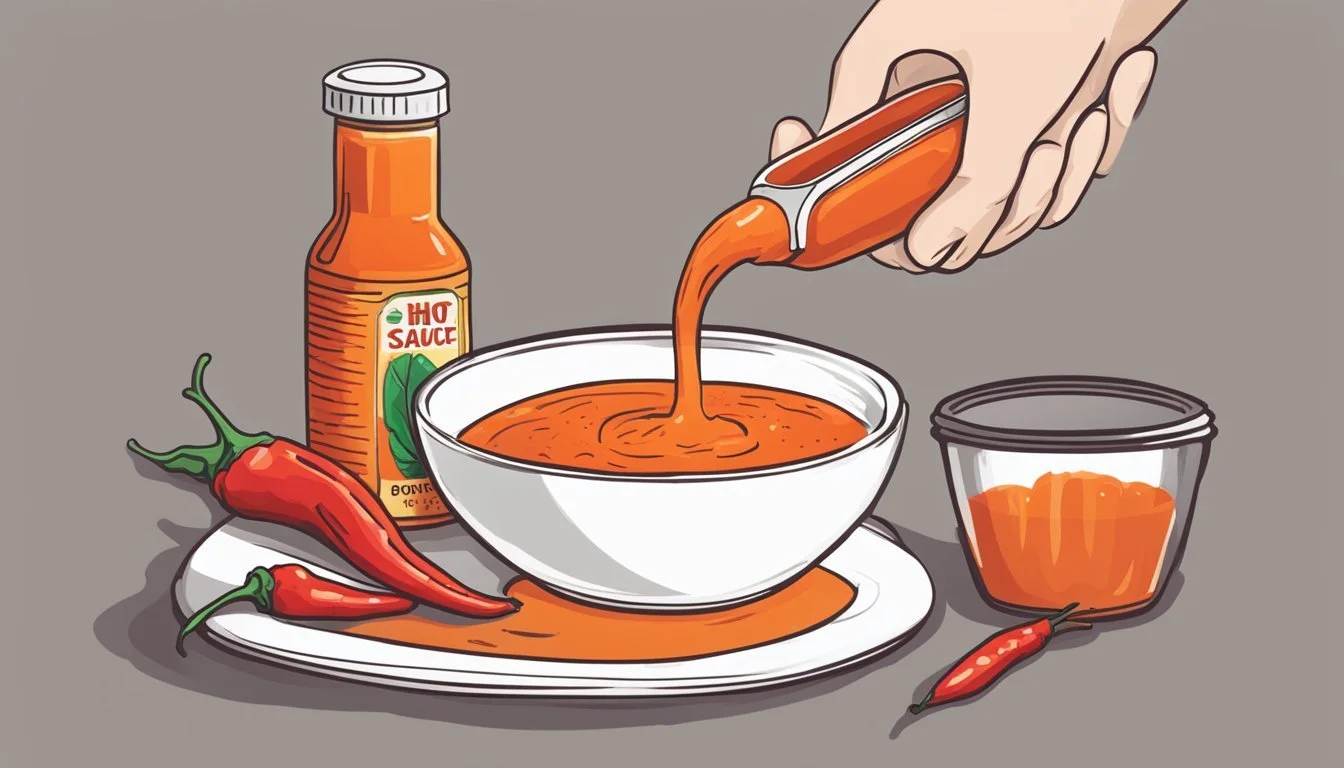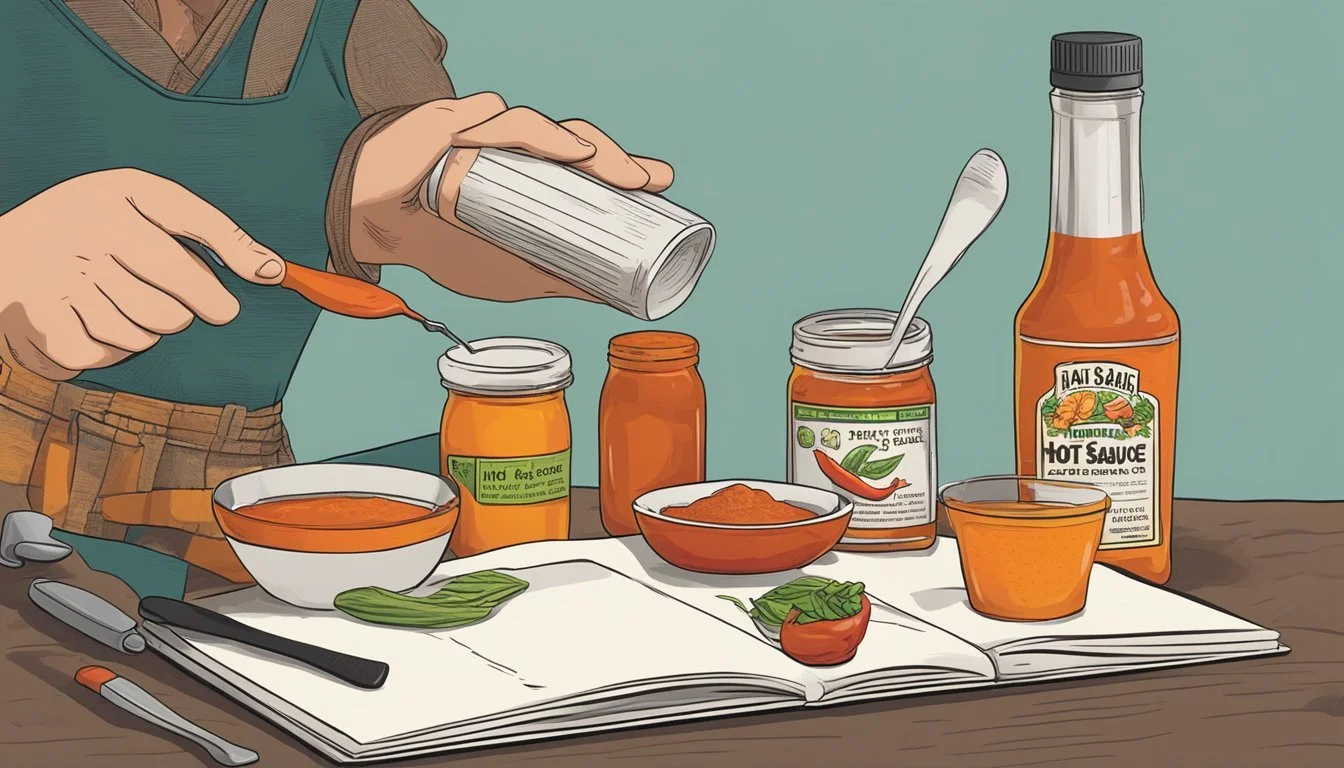How to Substitute Hot Sauce for Cayenne Pepper
Easy Spice Swap Tips
Substituting hot sauce for cayenne pepper comes into play when one runs out of the latter or prefers a liquid consistency in their dish. Both cayenne pepper and hot sauces can deliver the heat that a recipe may require, but they do so in distinct ways and with varying flavor profiles. Cayenne pepper, a dried and ground spice made from red chili peppers, offers a high level of heat and is commonly measured between 30,000 to 50,000 Scoville Heat Units. Its dry form allows it to easily blend into seasoning mixes and dry rubs, providing a consistent heat throughout the dish.
Hot sauce, on the other hand, is a liquid condiment that can range widely in flavor and spiciness, often fermented and including ingredients such as vinegar and salt. The choice to substitute hot sauce for cayenne pepper involves considering both the intensity of the spice and the additional moisture that the sauce introduces. In culinary applications, the vinegar present in hot sauce can add a tangy dimension that cayenne pepper does not possess, affecting the overall taste of the recipe.
When making the substitution, it's crucial to balance the flavors and control the level of heat. Since hot sauces vary in their spiciness, one must account for the particular type they're using. For instance, a more mild hot sauce may need to be used in larger quantities to match the heat of cayenne pepper, whereas an extremely spicy sauce might only require a few drops. Careful adjustment ensures that the substitution maintains the desired flavor profile and heat level of the dish while also delivering a consistent texture and appearance.
Understanding Cayenne Pepper
Cayenne pepper is a versatile and fiery spice that originates from the Capsicum annuum species and is well-loved for its bold flavor and heat. It's a common ingredient in spice blends and is also hailed for its potential health benefits.
Origin and Cultivation
Cayenne pepper plants are originally from the tropical and subtropical regions of the Americas. They belong to the Capsicum annuum species and have been cultivated for thousands of years. These peppers thrive in warm climates and are now grown globally, particularly in India, East Africa, Mexico, and the United States.
Flavor Profile and Heat Level
The flavor of cayenne pepper is characteristically pungent with a sharp spiciness that lingers. Cayenne pepper powder is widely used in cooking to deliver a consistent and robust heat. On the Scoville scale, cayenne peppers range from 30,000 to 50,000 Scoville Heat Units (SHU), indicating a high level of spiciness that's more intense than some common chili peppers but less so than others, like habaneros.
Nutritional Value and Health Benefits
Cayenne peppers and their powder contain vitamins A, E, C, B6, and K, in addition to minerals such as manganese and potassium. They are often used in detox drinks, such as detox lemon water, due to capsaicin, the active compound responsible for their heat. Capsaicin is known for its pain-relief properties and has been linked to various health benefits, including boosting metabolism and reducing hunger.
Hot Sauce Characteristics
Hot sauce is a versatile condiment that can vary greatly in flavor profile and heat level. It is an integral part of many cuisines and can be commercially produced or made at home.
Varieties and Spice Levels
Hot sauces come in numerous varieties, with spice levels ranging from mild to extremely hot. The heat is measured in Scoville Heat Units (SHU), with tabasco typically rating between 30,000 to 50,000 SHU. Common varieties include:
Tabasco Sauce: Made from tabasco peppers, vinegar, and salt. It has a sharp, pungent flavor with a moderate heat level.
Crystal Hot Sauce: A milder hot sauce that combines cayenne peppers with a higher vinegar content, offering a tangy and less spicy option.
Spice Levels can be generally categorized as:
Mild (1,000 - 10,000 SHU)
Medium (10,000 - 30,000 SHU)
Hot (30,000 - 100,000 SHU)
Extremely Hot (100,000+ SHU)
Role in Different Cuisines
Hot sauce is an essential element in many global cuisines, used to enhance flavor and add heat to dishes. In Asian cuisine, it is used in a variety of recipes, adding both spiciness and complexity to the flavors. Hot sauces can include ingredients common to the local regions such as:
In Asian Cuisine: Soy sauce, fish sauce, or tamarind may be combined with chili peppers.
In Western Cuisine: More focus is on the chili peppers and vinegar as the base ingredients.
Making Homemade Hot Sauce
Creating homemade hot sauce allows for complete customization of the flavor profile and desired spice level. A basic recipe might include:
Chili Peppers (choice depends on preferred heat)
Vinegar (to preserve and add tanginess)
Salt (to enhance flavors)
The process involves:
Blending all ingredients until smooth.
Straining (optional) for a thinner sauce.
Fermenting (optional) for added depth and complexity.
Homemade hot sauce can be tailored to suit any recipe or personal preference, offering a fresh alternative to store-bought varieties.
Substituting Hot Sauce for Cayenne Pepper
In culinary applications, substituting hot sauce for cayenne pepper requires understanding their distinct heat profiles and flavor contributions to achieve the desired result in a dish.
Factors to Consider
Before substituting hot sauce for cayenne pepper, one must consider the heat level and flavor of the hot sauce relative to cayenne pepper, which is known for its pure, spicy kick and a moderate heat level of 30,000 to 50,000 Scoville Heat Units. Hot sauces may contain various additional ingredients like vinegar, garlic, and sugar which can alter the taste of a recipe.
Adjusting Heat and Flavor
Heat Level: Hot sauces vary in pungency, so one should start with a small amount and gradually increase to taste, ensuring the spice level remains comfortable.
Flavor Profile: As hot sauces can introduce additional flavors, it's advisable to pick a sauce that complements the other ingredients in the dish.
Quantity and Conversion Tips
Measurements: To replace one teaspoon of cayenne pepper, start with half a teaspoon of hot sauce and adjust as needed, mindful that liquid volume differs from dry spice volume.
Recipe Context: For dry recipes, substituting liquid hot sauce for cayenne can impact overall consistency, so it's best suited for recipes with sufficient liquid content.
When substituting hot sauce for cayenne pepper, the key is to balance spice intensity while maintaining the integrity of the original flavor desired in a recipe.
Incorporating Hot Sauce into Recipes
When substituting hot sauce for cayenne pepper in recipes, it's crucial to consider the intensity of the sauce and its additional flavors such as vinegar, which can alter the taste profile of the dish. Here's how one can incorporate hot sauce effectively into various dishes.
Soups and Stews
In soups and stews, hot sauce can contribute a layered complexity. Start with a small amount, testing as they go, to avoid overwhelming the dish. The vinegar aspect of hot sauces like Crystal can enhance the overall flavor profile. For example, when preparing a seafood stew, they could replace hot paprika with a dash of hot sauce, adding it incrementally to achieve the desired spiciness.
Marinades and Dressings
When preparing marinades and dressings, hot sauce offers tang and heat. For a robust marinade, they may blend hot sauce with complementary flavors like cumin, ginger, and lime, perfect for meats or Jamaican jerk-inspired dishes. As for dressings, they will want to balance the heat with cooling elements such as yogurt, especially for salads.
Seasoning Meats and Vegetables
Before cooking, meats and vegetables can be coated lightly with hot sauce to infuse them with flavor. Bell peppers and other vegetables tossed with hot sauce before roasting can appeal to those looking for zest without the dryness of spices. It's advisable to use the sauce sparingly and pair it with milder seasonings to not overpower the natural flavors of the food.
Alternatives to Hot Sauce and Cayenne Pepper
When looking to replicate the heat and flavor of hot sauce or cayenne pepper, consider various alternatives that cater to different flavor profiles and spice levels.
Paprika Variants
One may consider paprika variants as an alternative, which come in three main types: sweet, smoked, and hot. Sweet paprika offers mild heat with a sweet undertone, suitable for those wanting a subtle flavor. Smoked paprika, on the other hand, provides a smoky dimension, perfect for giving a depth of flavor without excessive heat. For a closer match to cayenne's spice, hot paprika can be used as it imparts a more intense level of heat.
Dried and Fresh Pepper Options
For recipes requiring a spicy kick, one can opt for dried or fresh peppers. Chili flakes, which are typically made from crushed dried red chilies, can offer a comparable heat to cayenne pepper when used sparingly. Red chili powder, which shares a similar heat profile to cayenne powder, can also be used as a substitute. Jalapeños or Thai peppers may serve as fresh alternatives, where they can be finely diced to disperse heat throughout a dish. Chipotle peppers, which are smoked jalapeños, add both heat and a smoky flavor.
Seasoning Blends
Several seasoning blends can mimic the complex flavors of hot sauce or cayenne pepper. Cajun seasoning typically combines paprika with a variety of spices, providing both heat and a robust flavor. Chili seasoning, commonly blended with spices like garlic and oregano, can substitute hot sauce in recipes like soups and stews. Blackened seasoning is another option that provides a spicy, smoky flavor, often used on grilled or fried foods.
Storing Hot Sauce and Cayenne Pepper
To maintain the quality and flavor of hot sauce and cayenne pepper, proper storage is crucial. They each have different requirements due to their forms and ingredients.
Pantry Management
Hot Sauce:
Shelf Life: Typically, hot sauce has a long shelf life due to vinegar and preservatives, lasting up to three years unopened. After opening, it can last in the fridge for up to six months.
Location: Store it in a cool, dark pantry before opening. Avoid heat sources and direct sunlight to prevent flavor degradation.
Cayenne Pepper:
Container: An airtight, opaque container is ideal to shield cayenne pepper from light and moisture.
Scoville Scale: Cayenne pepper ranges from 30,000 to 50,000 on the Scoville Heat Units, adding a significant kick to dishes like curries.
Spice Rack: Reserve a spot on the spice rack away from heat to keep the cayenne pepper fresh.
Optimizing Freshness
Hot Sauce:
Fridge Storage: Once opened, it should be refrigerated to slow down the degradation process.
Cayenne Pepper:
Fresh Peppers: For those who use fresh cayenne peppers, drying and grinding them at home can optimize freshness. Store the resulting powder in a cool, dark area.
Pantry: The pantry should be dry to extend the shelf life of the ground spice, keeping it potent for your recipes.
Common Questions About Substitution
When replacing cayenne pepper with hot sauce in recipes, cooks may have several questions about how to do it effectively without compromising flavor and heat. Here are some frequently asked questions:
What's an appropriate ratio for substituting hot sauce for cayenne pepper?
A general guideline is to start with twice the amount of hot sauce compared to the cayenne pepper called for, adjusting based on taste and heat.
Will hot sauce change the dish's flavor?
Yes, hot sauce can introduce additional flavors such as vinegar and spices. It's important to taste and choose a hot sauce that complements the overall dish.
Can I use hot sauce in dry rubs or seasoning mixes?
No, hot sauce is unsuitable for dry applications. For dry rubs, consider using chipotle powder for smokiness or jalapeño powder for a milder heat.
Aside from hot sauce, what are other cayenne substitutes?
Gochugaru, with its sweet-smoky profile, is an alternative in Korean-inspired dishes. Chipotle powder adds a similar heat level with a smoky note, and jalapeño powder provides a milder kick suitable for those preferring less heat.
Remember that each substitute will impact the final dish differently, so the cook should be prepared to adjust other ingredients and seasonings accordingly. The goal is to balance the flavors while maintaining the dish’s intended spice level.








